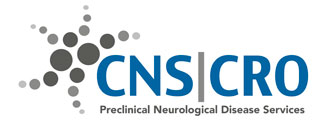Global Stroke
Neonatal hypoxia-ischemia: Hypoxic-ischemic encephalopathy (HIE) in neonates is a known cause of long-term neurological disability in children. The most commonly utilized animal model of this condition is produced at CNS CRO in 7 day old rat pups by inducing unilateral hypoxia-ischemia (HI; modified Levine model).
Carotid vessel occlusion: CNS|CRO can produce adult models of global ischemia with variable severity in both mice and rats. Occlusion can be either temporary via the use of artery clips, or permanent by suturing the vessel closed. Stroke severity can be further manipulated through the number of arteries targeted.
CNS|CRO Model Advantages & Differentiation
- Complex behavioural testing paradigms specifically designed for neonatal animals can be interfaced with adult testing and combined with appropriate histology and/or neurochemistry;
- Rigorous post-operative care protocols maximize survival rates and increase the range and duration of the deficits;
- Use of a multi-chamber closed system induction apparatus for the HI model provides consistent control, allowing multiple animals from all treatment conditions (if appropriate) to be induced simultaneously, and with minimal separation time from the dam;
- In adult rodents, temporary or permanent artery occlusion may be performed in 1 to 4 vessels: Lateralized ischemia (occlusion of one carotid artery) Bilateral global ischemia (2-VO; occlusion of both carotid arteries) Complete occlusion (4-VO; occlusion of both carotid and vertebral arteries)
Printable Model Information Sheet
Global Stroke Model Information Sheet
Please contact info@cnscro.com for further details.
